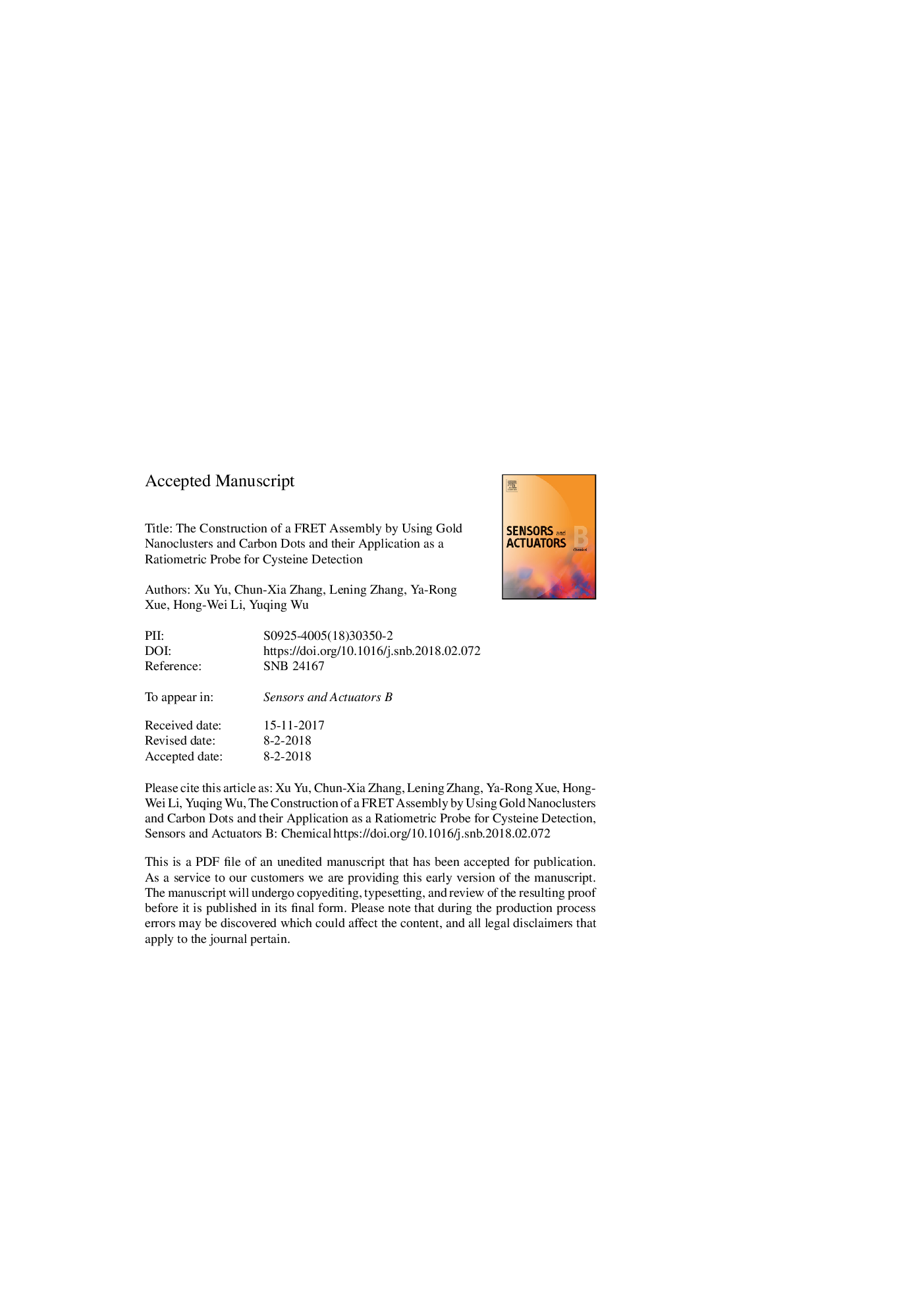| Article ID | Journal | Published Year | Pages | File Type |
|---|---|---|---|---|
| 7140397 | Sensors and Actuators B: Chemical | 2018 | 23 Pages |
Abstract
Förster resonance energy transfer (FRET) is a powerful tool to study single molecular conformation and/or distance changes between two fluorophores, which is mainly depended on the combinations and spatial distance between the donor and acceptor. The present study has built a FRET assembly by using gold nanoclusters capped by glutathione (AuNCs@GSH) and carbon dots (CDs) prepared by polyethyleneimine (PEI) through supramolecular interactions. The assembly is characterized in detail by employing Zeta potential, UV-vis absorption and fluorescence spectra, the luminescent decay curves and TEM images, which indicate the AuNCs are adhered to the surface of CDs. In addition, the transfer efficiency between them has been calculated to be 65.7%, which is sufficient enough for practical applications, and particularly, the quantum yield (QY) of AuNCs@GSH is increased from 3.07% to 5.35% via the assembly. Moreover, the FRET assembly is used as a ratiometric probe for cysteine detection in showing a limit of detection (LOD) at 100â¯nM, a very high selectivity to cysteine among amino acids as well as a strong anti-interference on them, especially, it was feasible for cysteine detection in fetal calf serum, which showed very high potential in the diagnose of cysteine-related disease.
Related Topics
Physical Sciences and Engineering
Chemistry
Analytical Chemistry
Authors
Xu Yu, Chun-Xia Zhang, Lening Zhang, Ya-Rong Xue, Hong-Wei Li, Yuqing Wu,
